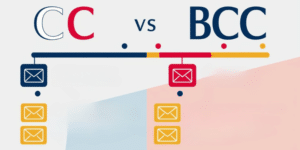Understanding the Difference Between CC and BCC in Emails
When composing an email, you may have encountered the fields labelled “CC” and “BCC.” Understanding these fields is essential for effective and professional email communication.
What Do CC and BCC Stand For?
- CC: Carbon Copy
- BCC: Blind Carbon Copy
These terms originated from the practice of making carbon copies of physical documents. In the digital realm, they serve different purposes when sending emails.
What Do They Do?
- CC (Carbon Copy): When you CC someone on an email, all recipients can see who else received the message. This is useful when you want to keep others informed without expecting them to take action.
- BCC (Blind Carbon Copy): When you BCC someone, their email address is hidden from the other recipients. This is useful for maintaining privacy or discreetly sharing information.
When to Use CC
- Informational Purposes: Keep colleagues or team members in the loop without requiring their input.
- Transparency: Allow all recipients to know who is involved in the conversation.
- Professional Communication: Ensure that relevant parties are aware of the communication for accountability.
When to Avoid CC
- Overuse: Including too many people can lead to clutter and confusion.
- Sensitive Information: If the recipients should not know each other’s contact details, avoid using CC.
When to Use BCC
- Privacy Protection: When emailing a large group, BCC prevents recipients from seeing each other’s email addresses.
- Avoiding Spam Issues: Reduces the risk of recipients replying to all or accidentally sharing the email chain.
- Discreet Communication: Allows you to share information with a third party without others being aware.
When to Avoid BCC
- Transparency Issues: Using BCC can be perceived as deceptive if recipients discover that others were hidden.
- Miscommunication Risk: If a BCC recipient replies, it can reveal their presence to the other recipients.
Conclusion
Understanding the roles of CC and BCC enhances your email etiquette and helps you communicate effectively. Use CC for transparency and BCC for privacy, but always consider the context and potential consequences before deciding which field to use.



